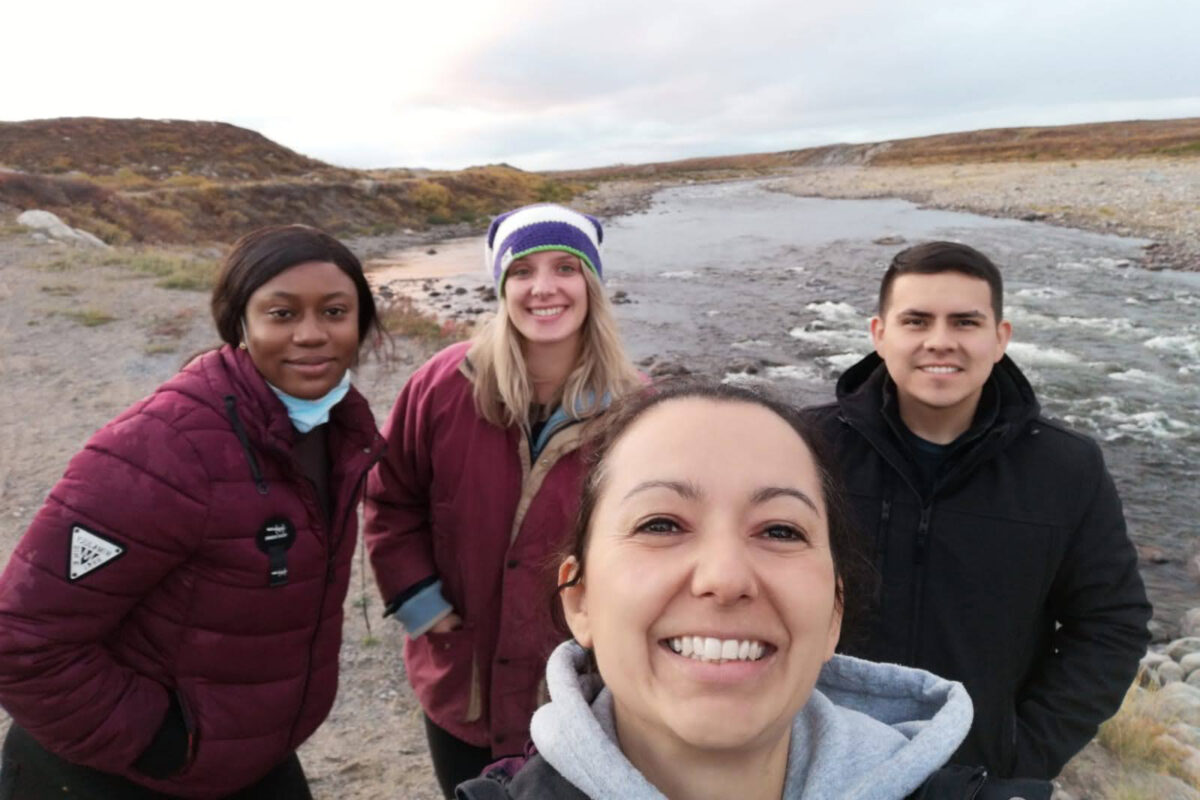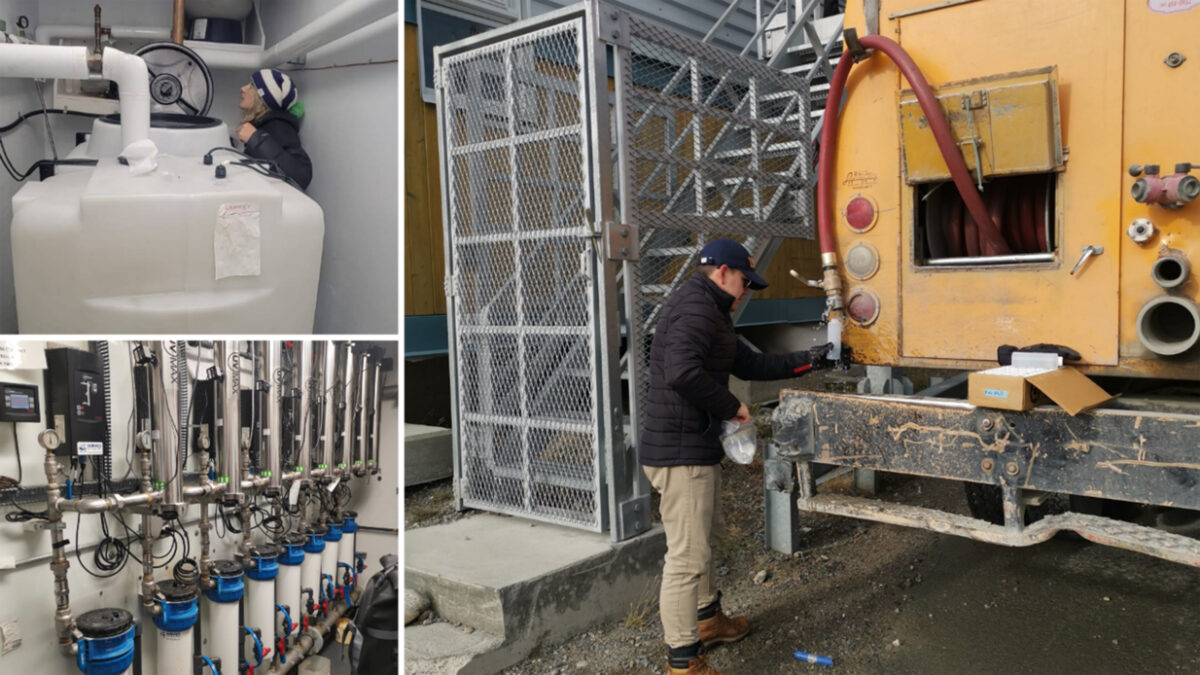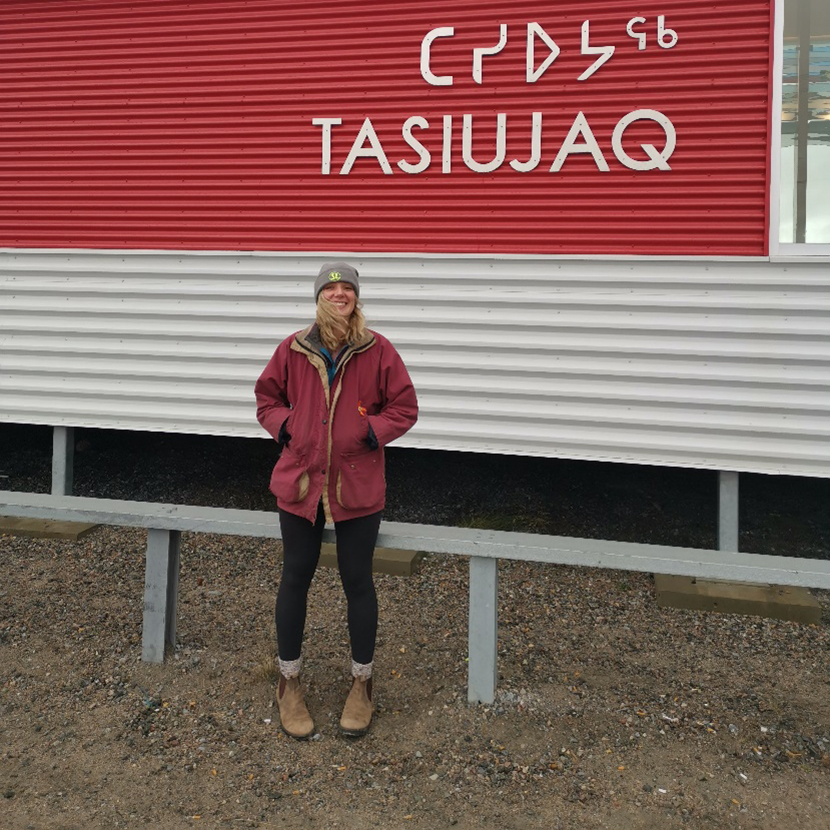Lassonde PhD candidate surveys Local Water Supply in Fly-In Community of Tasiujaq
Tags:

At the beginning of October, as part of a collaboration with the University of Ottawa and Université Laval, Caroline Duncan, a PhD candidate, Civil Engineering in Dr. Stephanie Gora’s group from the Lassonde School of Engineering at York University, set out to test and survey the water quality within residential water cisterns and to observe cistern design and cleaning protocols in the Northern Quebec fly-in community of Tasiujaq. She documented her experiences and findings from her time spent there
Located right on the edge of the Arctic tundra, on the shores of Leaf Lake in Nunavik (northern Quebec), lies the fly-in community Tasiujaq, which is home to approximately 420 people. The community is known for its world-record-setting tides, vast wildlife and outdoor pursuits, such as hunting and fishing.
Tasiujaq, like many Arctic communities, relies on a truck-and-cistern drinking water system where treated drinking water is distributed to individual buildings via truck and stored in cisterns until it is needed by residents. The cisterns are cleaned once every two years to remove sediment and other accumulated materials. Very few researchers have explored the impact of cistern design, cleaning methodology and cleaning interval on water quality in the cisterns.
At the beginning of October, as part of a collaboration with the University of Ottawa and Université Laval, Caroline Duncan (PhD candidate, Civil Engineering, Lassonde School of Engineering at York University) set out to test and survey the water quality within residential water cisterns and to observe cistern design and cleaning protocols.
This pilot project, led by Dr. Stéphanie Guilherme at the University of Ottawa in collaboration with Dr. Manuel Rodriguez-Pinzon at Université Laval, Dr. Stephanie Gora at the Lassonde School of Engineering at York University, and the Kativik Municipal Housing Bureau, aimed to gather this information and to inform future research projects as well as to improve cistern design and management in the community to ensure that all residents have access to a consistent supply of high-quality drinking water. The team’s first day in Tasiujaq was spent meeting key leaders within the community including the housing manager, the mayor and the services manager from Northern Village in addition to individuals from Kativik Municipal Housing Bureau. Community members were informed about the project and research activities through the local radio station. The original plan was to test fifty residential cisterns and kitchen taps, however, this proved to be challenging for a couple of reasons.

Due to National Day for Truth and Reconciliation and weather conditions not ideal for flying, the team’s plan was delayed by several days. Not all was lost and the team’s previous field research experience and problem-solving skills came into play to adapt the experimental plan to suit the conditions “on the ground”.
They were able to carry out a dry run of their methodologies to ensure they were not risking contamination of the samples. The team performed sample analysis of various stages of the water treatment process, sampled water cisterns in public buildings and executed design surveys of cisterns at homes that they couldn’t get to due to the tight time restrictions.

After weather conditions for flying became favourable, the cistern cleaners arrived. The final objective, of the team’s research trip – to observe the cleaning protocols of the cisterns – was achieved just before they were due to fly out the next day.

In reflection, the highs and lows experienced by the researchers living in the remote community left them with a deeper appreciation of the strength and resilience of this Inuit community in the face of the challenging circumstances they face day to day with drinking water provision. Their example served as a stark reminder that for things to work, team members must be able to come together and help one another, keep a level head and communicate clearly, particularly when things begin to feel like they are going sideways. The trip ended up being a great success even though the road, at times, was bumpy.